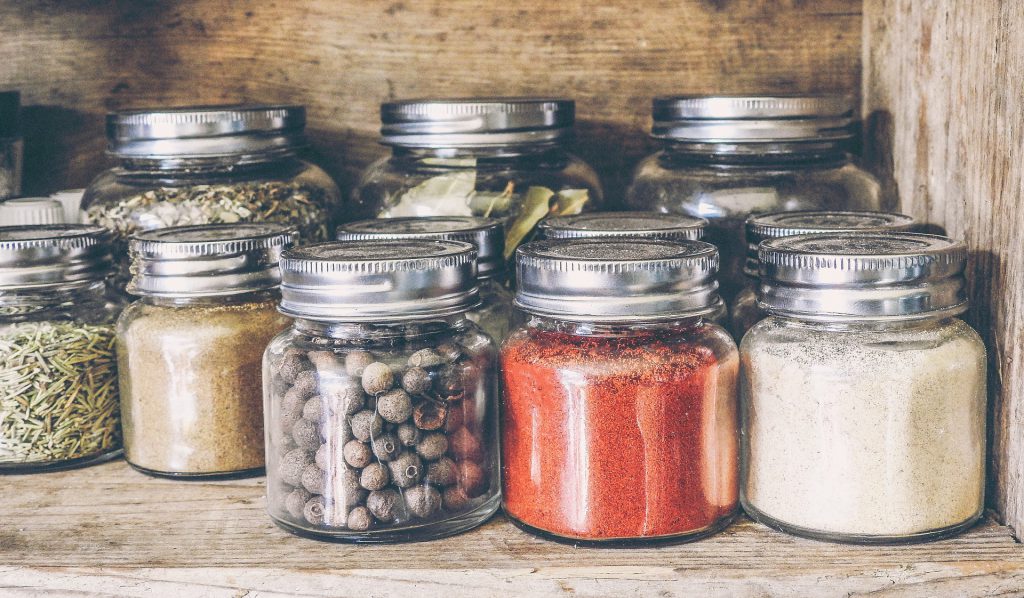Dabbling in the kitchen:
My mother has a complaint about me. She is bothered that I don’t use her carefully chosen Tupperware containers to store groceries. I am meticulous in general, however sometimes I simply don’t care too much. I only put the spices and rice that I use daily in their respective containers. Other groceries generally lie on the shelves in packets secured with rubber bands.
This was a snippet of a conversation between my mom and me last week. I asked, “Amma, how much sugar will the square dabba hold and how much will the round dabba hold?” She said nonchalantly, “the square one will hold half kg and round one will hold quarter kg.” My mother knows this fact because she is a pro when it comes to kitchen containers.
The ‘square dabba’ is my usual container for sugar and I was looking for another container for the overflow. The ‘square and round dabbas’ sit on the same shelf, they are of the same height. The fact that they hold different amounts of sugar made me think of volume. By the way, the ‘square dabba’ is not really a square but a cuboid and the ‘round dabba’ is a cylinder.
Calculation of volume:
The dimensions of these containers are as follows:
Round dabba – height = 10 cm, diameter = 7.5 cm.
Square dabba – length = 12 cm, breadth = 7 cm, height = 10 cm.
Volume of the round dabba = volume of cylinder = πr2h = 3.14 x (3.625)2 x 10 = 412 cm3
Volume of square dabba = volume of cuboid = lbh = 12 x 7 x 10 = 840 cm3
Experimenting with mass:
Last weekend, I set out to empty the shelves of packets and organise my groceries ‘properly’ – to use my mother’s expression.
I found 4 empty round dabbas. I filled the first one with whole green gram, and the second one with red chillies. The boxes of the same size held ~200 g green gram and hardly 20 g of red chillies. I was still left with packets with rubber bands, but the difference in the amount of groceries triggered a wish for experimentation. I picked up the other two empty dabbas, filled one with raw white rice and the other with mandakki (puffed rice). Then, I weighed the two dabbas (and subtracted the mass of the pre-weighed empty dabba to determine the mass of the food item in it). It turned out that the mass of rice was 250 g and that of puffed rice was 50 g.
The volume of each container was identical and yet it held different amounts of the chosen grocery items. What concept does this help with? Density, of course! I proceeded to make my lesson plan based on this kitchen experience and left packets of groceries on the shelf for another day.
Calculation of density:
Density = mass/volume
Based on the measurements above, the densities of the different grocery items are:
Green gram = 200 g / 412 cm3 = 0.485 g/cm3
Red chillies = 20 g / 412 cm3 = 0.0485 g/cm3
Rice = 250 g / 412 cm3 = 0.606 g/cm3
Puffed rice = 50 g / 412 cm3 = 0.121 g/cm3
The joy of exploration:
My mother was not happy about my ‘improper organisation’ of groceries, but I was happy to have found a teaching moment in the kitchen. These experiences are learning moments for me as much as they are teaching ones. The more examples I find in my day-to-day experiences for concepts of Science and Maths, the happier I am. This example also gave me an opportunity to pose a trick question to my student. Can you guess the question?
My urge to all teachers out there is to look at familiar concepts in new perspectives. Examine familiar topics in unfamiliar contexts. This is the birthplace of creativity. This practice will help us reinvent ourselves as teachers and learners time and again.
Keywords: experiential learning, science around us, joy of exploration
Featured Image credits: Image by monicore from Pixabay
Dr. Soumya Sreehari
Latest posts by Dr. Soumya Sreehari (see all)
- To drink water or not to drink – that is the question - 11 June 2021
- Puzzles for fun and learning - 28 May 2021
- A questioning mind is a thinking mind - 14 May 2021
- Play and learn having fun with words - 7 May 2021
- 4 lessons to learn from the Montessori method - 30 April 2021


familiar topics in unfamiliar contexts” such a brilliant perspective, thanks for sharing !
Thanks, Raghu! Glad you found it helpful.